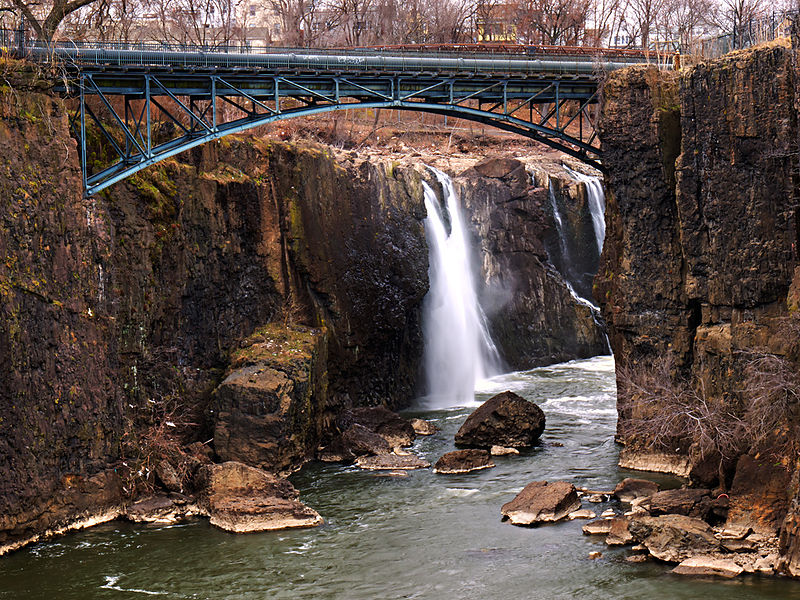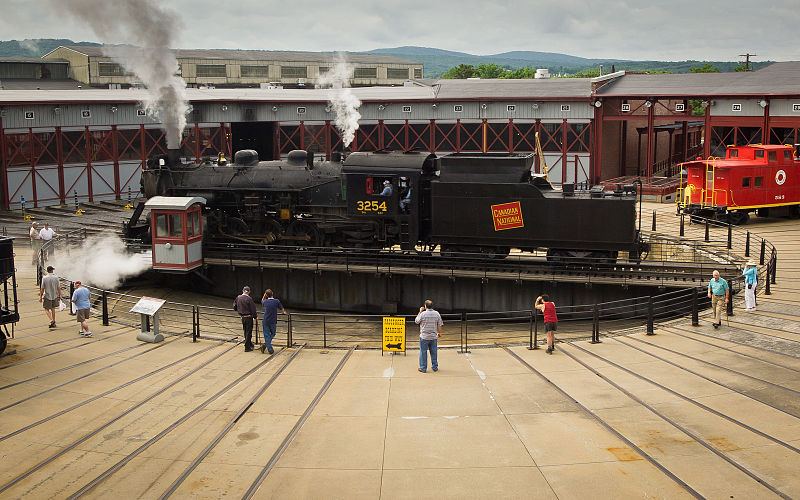The United States has 401 national parks, which are visited by over 275 million people every year. As the National Park Service (NPS) approaches its centennial anniversary in 2016, the agency is reevaluating how parks are used and maintained, Arch Daily reports.
To this end, NPS has joined with the Van Alen Institute and created the National Parks Now competition. This competition fits into the Institute's existing initiative, Elsewhere: Escape and the Urban Landscape, to investigate how built environments create a need for escape. The National Parks Now competition seeks to make parks relevant for a wider audience, especially smaller national parks near urban areas.
Four parks in the Northeast have been chosen as case studies for the competition:
- Sagamore Hill National Historic Site (Oyster Bay, NY) – President Theodore Roosevelt’s estate
- Steamtown National Historic Site (Scranton, PA) – a monument to the steam locomotive
- Paterson Great Falls National Historic Park (Paterson, NJ) – birthplace of American textile manufacturing
- Weir Farm National Historic Site (Ridgefield, CT) – summer estate of artist Julien Alden Weir
National Parks Now asks entrants to propose all types of interventions for these parks, including interactive installations, site-specific education and leisure opportunities, outreach and engagement campaigns, and self-led tours. Any ideas to expand the park-going public, especially those that can be used as a model for other parks, are welcome.
The competition is open to architects, designers, historians, communications professionals, and others.
After an initial phase of competition, four teams, one for each park site, will be selected to participate in a six-month, collaborative research and design process, and will receive $15,000.
A winning team will be chosen after this period and a prototype of their work will be implemented at their site in 2015. See more about the competition here.
Related Stories
Sustainability | Sep 18, 2024
3 living buildings made by a living practice
Prompting humans to reexamine our relationship to the environment, architecture creates the opportunity for us to physically experience ideas of beauty, performance, and structure through the distinct lens of place.
3D Printing | Sep 17, 2024
Alquist 3D and Walmart complete one of the nation’s largest free-standing, 3D-printed commercial structures
Walmart has completed one of the largest free-standing, 3D-printed commercial structures in the US. Alquist 3D printed the almost 8,000-sf, 20-foot-high addition to a Walmart store in Athens, Tenn. The expansion, which will be used for online pickup and delivery, is the first time Walmart has applied 3D printing technology at this scale.
Retail Centers | Sep 17, 2024
Thinking outside the big box (store)
For over a decade now, the talk of the mall industry has been largely focused on what developers can do to fill the voids left by a steady number of big box store closures. But what do you do when big box tenants stay put?
Government Buildings | Sep 17, 2024
OSHA’s proposed heat standard published in Federal Register
The Occupational Safety and Health Administration (OSHA) has published a proposed standard addressing heat illness in outdoor and indoor settings in the Federal Register. The proposed rule would require employers to evaluate workplaces and implement controls to mitigate exposure to heat through engineering and administrative controls, training, effective communication, and other measures.
Codes and Standards | Sep 17, 2024
New California building code encourages, but does not mandate heat pumps
New California homes are more likely to have all-electric appliances starting in 2026 after the state’s energy regulators approved new state building standards. The new building code will encourage installation of heat pumps without actually banning gas heating.
Mass Timber | Sep 17, 2024
Marina del Rey mixed-use development is L.A.’s largest mass timber project
An office-retail project in Marina del Rey is Los Angeles’ largest mass timber project to date. Encompassing about 3 acres, the 42XX campus consists of three low-rise buildings that seamlessly connect with exterior walkways and stairways. The development provides 151,000 sf of office space and 1,500 sf of retail space.
Education Facilities | Sep 16, 2024
Hot classrooms, playgrounds spur K-12 school districts to go beyond AC for cooling
With hotter weather occurring during the school year, school districts are turning to cooling strategies to complement air conditioning. Reflective playgrounds and roads, cool roofs and window films, shade structures and conversion of asphalt surfaces to a natural state are all being tried in various regions of the country.
Office Buildings | Sep 16, 2024
Maximizing office square footage through ‘agile planning’
Lauren Elliott, RID, NCIDQ, Director of Interior Design, Design Collaborative, shares tips for a designing with a popular and flexible workspace model: Agile planning.
3D Printing | Sep 13, 2024
Swiss researchers develop robotic additive manufacturing method that uses earth-based materials—and not cement
Researchers at ETH Zurich, a university in Switzerland, have developed a new robotic additive manufacturing method to help make the construction industry more sustainable. Unlike concrete 3D printing, the process does not require cement.
Libraries | Sep 12, 2024
How space supports programming changes at university libraries
GBBN Associate Sarah Kusuma Rubritz, AIA, uses the University of Pittsburgh's Hillman Library to showcase how libraries are transforming to support students’ needs.



















